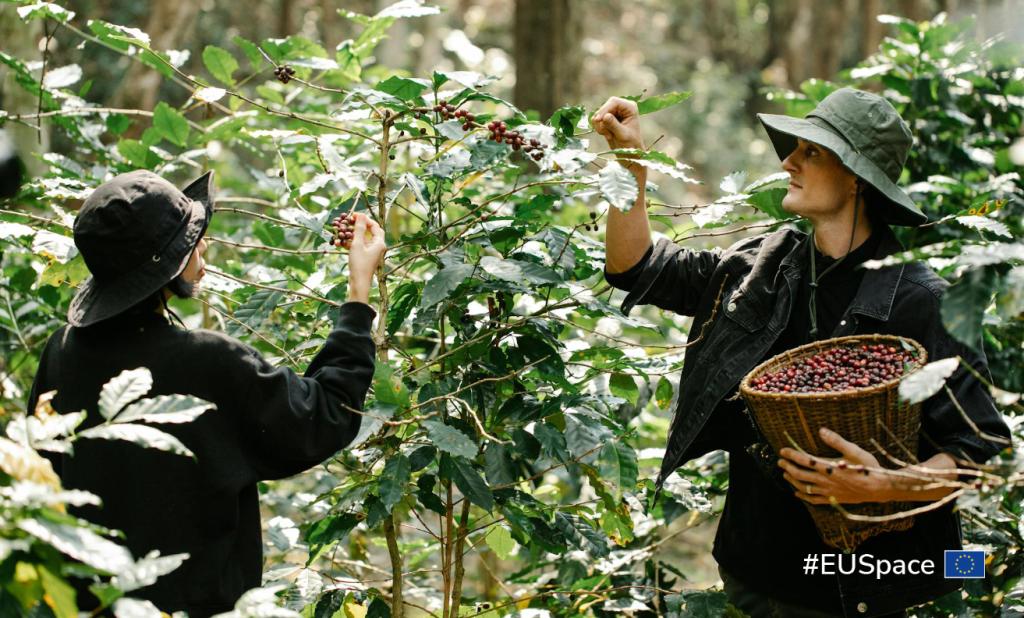EU Space goes global

Demand for space-based applications is growing – and growing fast. In fact, over the course of the next decade, GNSS and Earth Observation combined global revenues are set to increase by nearly EUR 330 billion.
This is great news for the EU, whose economic recovery and resilience stands to benefit from the market uptake of EU Space technologies, and for the many citizens and businesses who rely on space-based data and services.
But why should these benefits be limited to the EU?
“While the technology may be European, the benefits of EU Space are clearly global,” says EUSPA Executive Director Rodrigo da Costa. “That’s why EUSPA is committed to bringing EU Space data and services to international markets.”
At the centre of this commitment is Horizon Europe, the EU’s funding programme for research and innovation.
“Through our Horizon Europe funded projects, EUSPA links the downstream space expertise of Europe with SMEs and universities around the world,” adds da Costa. “In doing so, we not only foster further investments in EU Space, we also create new opportunities for EU space-based companies.”
Copernicus at work in Chile and Colombia
One of those international projects is COMUNIDAD, which is dedicated to developing integrated solutions based on European GNSS and Copernicus for users in the Community of Latin American and Caribbean States (CELAC).
With a focus on Chile and Colombia, the Horizon Europe project is building regional capacity for processing Sentinel data and using Copernicus products and services to support the agriculture, forestry, and rural development sectors. For example, in Chile, a pilot will use Copernicus data to monitor snow cover changes in the country’s Patagonia region.
“Variability in snow coverage has a direct impact on how water is allocated for drinking and agriculture, and the insights provided by this pilot will support local and national decision makers in implementing climate adaptation strategies,” says Dr Gerard Olivar-Tost, a professor at Chile’s University of Aysen, one of the project’s partners.
A second pilot, set to take place in Colombia’s Caldas region, will use Sentinel data to identify the distribution of coffee crops and other vegetation. This information will help decision makers both assess an area’s suitability for cultivation and forecast harvest yields.
“The ultimate goal is to understand how extreme weather events impact the coffee production and, based on this understanding, implement effective adaptation and disaster risk management strategies for small Colombian coffee growers,” explains Dr Juan Rodrigo Sanz Uribe, Head of Engineering and Senior Researcher at the Coffee Research Centre of Colombia, another of the project’s partners.
The project also looks to establish an ‘EU-CELAC Knowledge Area’ by fostering research and innovation cooperation, promoting the use of new technologies, and facilitating technology transfer to support sustainable socio-economic development.
How about a little sugar with your space?
Another Horizon Europe project linking EU Space with Latin America is DINOSAR. The project is developing an operational diagnostic tool based on multi-sensor Copernicus data to consistently monitor sugarcane crops in Colombia.
“By helping farmers match fertiliser, pesticide and water use to a crop’s actual needs, our solution will make sugarcane cultivation more sustainable and environmentally friendly,” says Carlos Mosquera, CEO at C.I. AGROAP SAS, one of the project’s partners.
While the actual work may be happening in the sugarcane fields of Colombia, DINOSAR’s impact will have a global reach. After all, sugarcane is the world’s largest crop by volume. “We aim to scale up our solutions so sugarcane farmers around Latin America – even the world – can use Copernicus data to make informed decisions about water, fertiliser and pesticide use,” adds Corné van der Sande, Project Manager and Service Developer at eLEAF, the project’s coordinating partner.
“Using European space solutions to support local sugarcane farmers in Colombia, the findings of which could benefit agricultural stakeholders here in Europe and around the world – that’s just a taste of what we can achieve when EU Space goes global,” concludes da Costa.
Media note: This feature can be republished without charge provided the European Union Agency for the Space Programme (EUSPA) is acknowledged as the source at the top or the bottom of the story. You must request permission before you use any of the photographs on the site. If you republish, we would be grateful if you could link back to the EUSPA website (http://www.euspa.europa.eu).